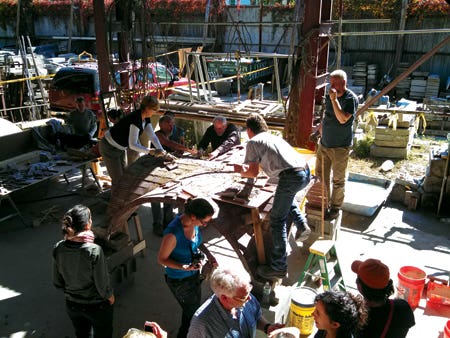
Features
Guastavino Thin-Tile Vaults

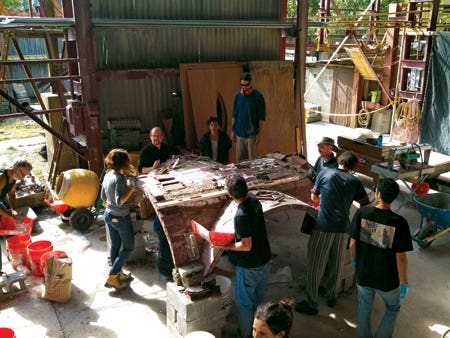

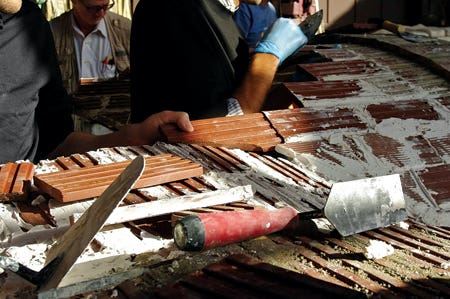

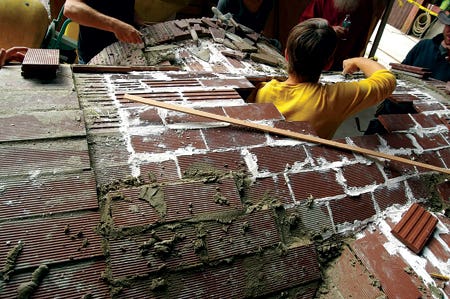
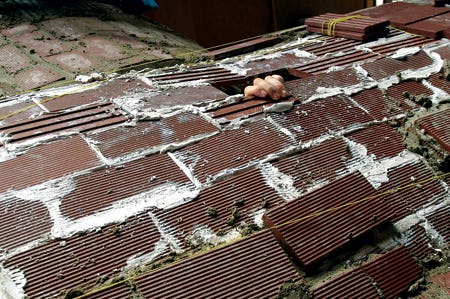
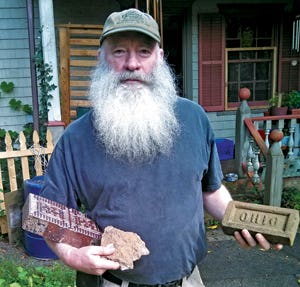
Under the heading of esoteric masonry, there are a few items that stand out: columns, lintels, arches, bridges, aqueducts, serpentine brick walls, corbels, carved stone, flying buttresses, fireplaces and in the far exotic end of the spectrum, Guastavino tile vaults. Guastavino tile is a masonry construction using thin tile built up in multiple-layers to form a composite of thin shells in various configurations of self-supporting masonry arches and vaults. The building technique was brought to the United States by Rafael Guastavino from Catalonia, Spain, in the late 19th century. The construction company that he formed, along with his son to follow in his footsteps, remained in the business of building Guastavino vaults up into the early 1960s. A most notable example of Guastavino tile is the Oyster Bar in Grand Central Terminal in New York City.
Prior to and in coordination with the Association for Preservation Technology International conference in October 2013 in New York City, a two-day hands-on workshop at the A. Ottavino stone yard in Ozone Park, Queens, NY, gathered a number of craftspeople to build two Guastavino structures. One was an intersection of two barrel vaults and the other a barrel vault with intersecting lunettes (little moons).
The workshop leaders were Kent Diebolt (Vertical Access, NYC), Berta de Miguel (Vertical Access), Mallory Taub (Arup, San Francisco), David López López (Catalonia), Benjamin Ibarra Sevilla (University of Texas, Austin), Marta Doménech Rodriguez (Catalonia), Ken and David Follett (Follett-PCLS), and Kevin Dalton (Vertical Access). Sponsors included Orchard Park, NY-based Boston Valley Terra Cotta, which supplied the tile; APT (Association of Preservation Technology) and Vertical Access. The National Center for Preservation Technology and Training (NCPTT) provided a grant.
Here’s the process for building a Guastavino vault:
- You take a tile in one hand, left or right as needed, and in the loose hand take a trowel, which you then dip into wet, white plaster. Butter two edges of the tile and then briskly, or at least without too much hesitation, lift up and set the thin piece of baked-clay masonry sort-of flat up in the air and squeezed against the other tiles you have already set. The tiles set over the last few minutes hang out into the air. You gently wiggle and prod the tile with your fingers and your palms to where it needs to be, and then you hold it there for a bit.
- Hold the thin tile there just long enough for it to stay in place as it reaches out along where you imagine and desire the vault surface to be. As best as you are able, that is, as this is a workshop for non-masons to gain an inherent appreciation of the craftsmanship of this masonry technique. As you stand and hold the tile, you look around and talk to your neighbor. You get to know each other as you build together. On the wet saw, tiles are being cut in halves, slivers and triangles. You feel the weight of the tile and the plaster on your hands as it changes from wet and squishy to hard. Timing is important; the materials can be impatient.
- Listen to the tap-tap of the trowel against the drum of the vault. There is no formwork. You have to feel through the structure of the masonry as it sets and cures. At this stage there is no support, only the magic of adhesion of the plaster as it sets hold to suck in and grasp the tiles that freely reach out into space. That is, until you get to the last tile, which, as in a picture puzzle, fits in and completes the whole reality of the vault.
- Another layer of tile is offset over the first layer, set in a cementitious mortar, with a whole lot less dramatic flair. Slick it with the mortar and plop it down, wet, squiggle it into place and move on. There are, for this workshop, only two layers of tile. The last tiles are set in place. Then everyone adjourns to an interior room for lunch and a talk about the history, mystery and tradition of this architectural form.
But hold on! There are many mysteries when it comes to Guastavino vaults and one of the first is their remarkable strength and durability in form – when everyone has almost left the work area, and only minutes since the last tile has been set, a really big guy in an impish stir of impatience jumps up and runs from corner to corner across the top of one of the freshly built vaults.
For more information, the definitive book on the subject is Guastavino Vaulting, The Art of Structural Tile, by John Ochsendorf (New York, Princeton Architectural Press, 2010). See Clem Labine’s review in the April 2011 issue of Traditional Building.








